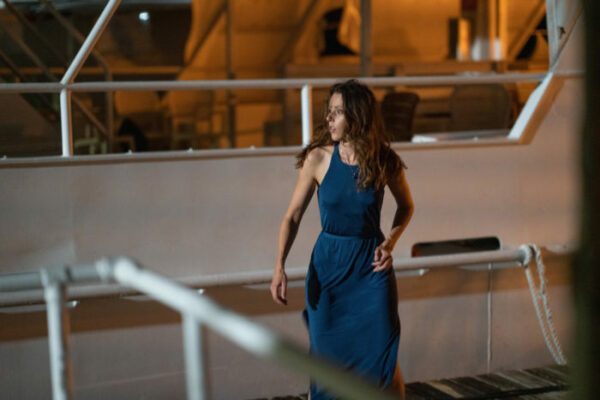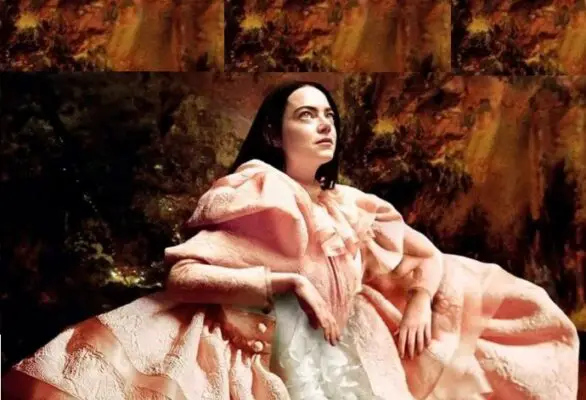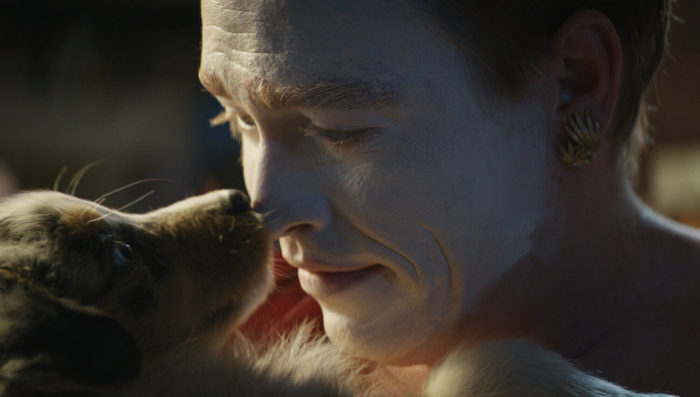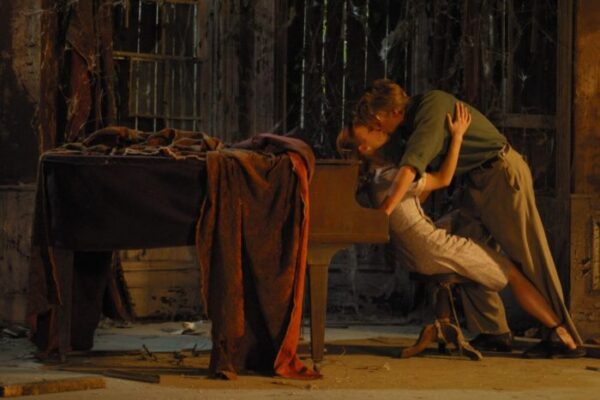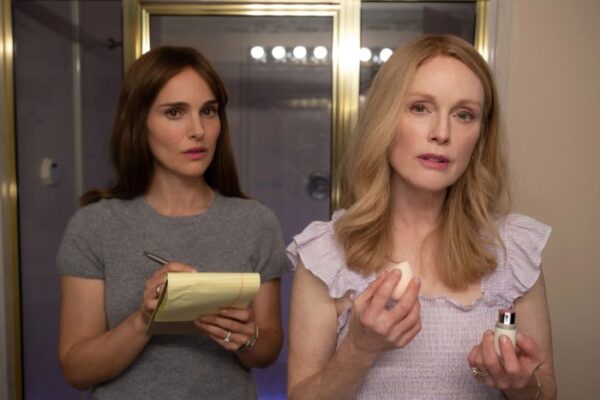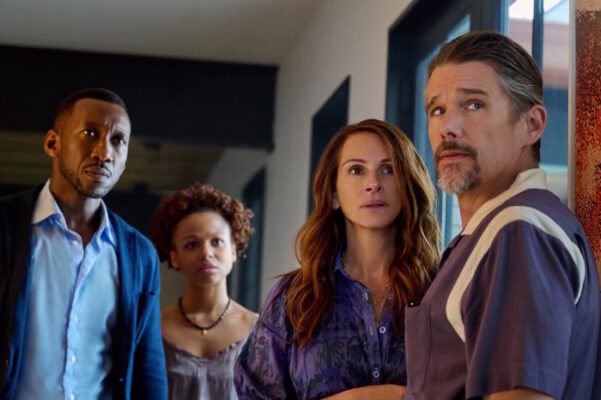The name “Vivarium” is strange and incomprehensible, but let’s turn to search engines and find an explanation for it. A vivarium is a separate place near a biomedical facility, for example, at a research institute. The purpose of the vivarium is to keep laboratory animals that are needed for experiments. In other words, a vivarium is a nursery where, in addition to conducting experiments on animals, they are also bred. This is such a capacious title, and a person who is not too lazy to look for an answer can superficially guess about the content of the film.
What does it mean to live when you are just a resource for someone? But more importantly, what does it mean to live, understanding this, deceiving oneself, being in the illusion of freedom? These questions are played up in the film “Vivarium”.
From the very beginning, we are told about house number 9, located in the well-maintained Yonder district, in which the main characters, Jema and Tom, settle. This is something like a kind of laboratory cell, and the young couple itself becomes an experimental consumable for this place. There is a hunch that an inhuman experiment awaits us ahead.
The plot begins with the fact that a couple of lovers wants to acquire their own housing to create a cozy nest. This is the basic need of any newly created family. At the beginning of the film, Gemma’s maternal instincts have not yet fully formed, she doubts what is felt in a conversation with a woman she knows. But in the end, she succumbs to the pressure of this systemic person who already has a child. This is what pushes Jema to take the first step. Moreover, a familiar woman motivates her with the fear that real estate will soon increase in price. Deciding to buy a house, she draws herself and Tom into unwitting participation in a mysterious experiment.
Having got to the realtor, Tom also doubts the need to immediately go and see the house. As a man, Tom should have made the final decision, but he didn’t have a chance to protest. The realtor from the real estate agency only says that the area is ideal in every way: close to the city and close to beautiful scenery. The seller also manipulates resources (money), reminding that houses can be sold out very quickly.
Following the chain of reasoning, we will see that the young family got into Yonder only because a strange system woman and the same system seller manipulated both of them to this decision. The behavior of the seller is extremely strange, he often mimics the young. But Gemma and Tom did not pay due attention to this. When they went to see the house, the words in the song that sounded in the car were like an opaque allusion to the absurdity of what was happening. Tom and Gemma sang along, but as if trying to persuade themselves and their inner voice to calm down and write off the panic and anxiety on the exciting event associated with the acquisition of their own home. We observe moments when the entire internal understanding of the situation literally screams that you should trust your intuition as an instrument of reason. But a person is deceived by external images, manipulations and embedded systems of behavior.
In an ideal area called Yonder, there is neither fresh wind nor realistic clouds, which usually have a wide variety of shapes. All of them are absolutely identical to each other, as if taken from a perfectly illustrated children’s book. Any acoustics here is heard as if in a huge pavilion or in a giant laboratory.
Yonder turns out to be a remote place, cut off from civilization, where there is no communication and even birds do not fly. It is impossible to leave the town and any attempts end up with the couple again and again being at the ill-fated house number 9 (as a reference to the woman’s pregnancy). Unknown people give Jema and Tom a baby with an accompanying note that freedom will be obtained when the foundling is grown.
The behavior of the “cuckoo” is based on primitive principles of behavior. The cry of a child is, in fact, a common manipulation, the TV that he watches forms his behavior model, i.e. the system begets the system. And the terrible modifications in it are, in a way, allegories of when parents see that something is wrong with their child, something that is not included in their understanding of the norm (for example, belonging to a subculture, or, if a teenager of atheistic views would live in a family of religious parents).
Thus, those systemic patterns with which you move through life do not allow you to look at reality from the right point of view. Only when Jema decided to get rid of the grown-up foundling, i.e. conditionally remove the veil of illusions, the true essence of this place was revealed to her. If she had listened to Tom before, then they might not have become part of the system. The film introduces to the audience the idea that having children is creepy and means forever saying goodbye to your dreams and that children do not belong to their parents: kindergarten, school, TV, the Internet, books form a person with certain views, not always the way one would like. The images of the film and the closed space from which it is impossible to get out, another wrapper for all the systemic patterns of the modern world.

